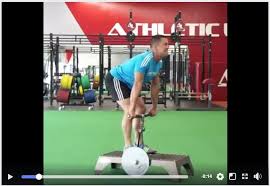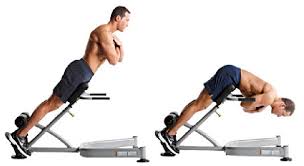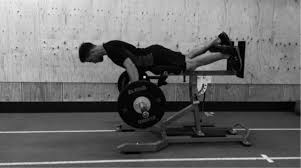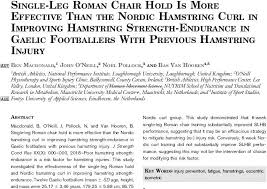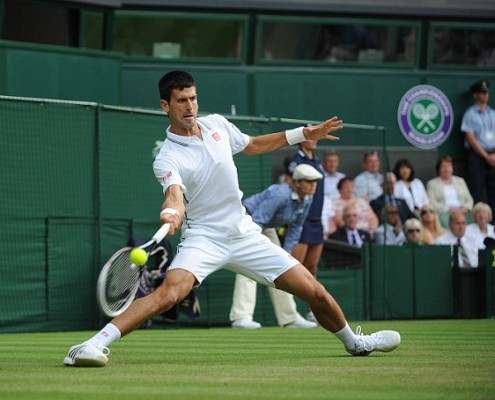Pacey Performance Podcast REVIEW- Episode 248 Hamstring Injuries- Part 1 of 2
This blog is a review of the Pacey Performance Podcast Episode 248 – Hamstring Injury
Australian Catholic University
Background:
Josh Ruddy– Running loads and hamstring injury risk. Two years into PhD embedded with one of the AFL teams. Looking at hamstring injury prediction.
Ryan Timmins– completed PhD, now supervising Josh- and working with elite soccer programme Melbourne Victory. Looking at reducing injury risk.
Jack Hickey– clinical exercise physiologist, completed PhD and now sports rehab injury lecturing and research. Looking at hamstring rehab.
Discussion topics:
JR on the contrast between academic research and real life
”The risk of finding nothing.
We try to grow our research projects around what the industry actually requires and what questions that they might have, so that in turn organically grows interest.”
JR on predicting hamstring injuries
”Background was studying high speed running loads and how that influences the risk of hamstring injuries. High speed running and Workload in general is quite a hot topic. Large weekly changes in high speed running loads increase the risk of hamstring injury.
Non modifiable
- History of hamstring injury
- Increasing age
Modifiable
- Biceps femoris long head fascicle length
- Low levels of eccentric hamstring strength
- Workload (and in particular high speed running volume)
High speed running was considered to be distance covered above 24 km/h. Approximately anything over in terms of a week to week change. Doing 200 metres more than the previous week doubled your risk of injury.
It is really important to consider that the numbers and statistics reported in studies are actually really specific to the cohort from what they are derived.
Optimal threshold and optimal cut points are really only optimal from the particular cohort that they are derived.
They are derived from looking at injury rates above and below a specific thresholds and once they are determined you then actually retrospectively apply that threshold to that same cohort. It might not necessarily be relevant when talking about other cohorts. Sometimes people get too caught up in those numbers being hard and fast rules. For example, it is thought that you need to be above 256 Newtons for eccentric hamstring strength at the start of pre-season or you are going to get injured. When really they are just there to act as a guide.”
JR on predictive modelling
”It’s a pretty broad term, and there are a number of different facets and elements that fit under that umbrella term. It is taking some data and identifying different patterns that occur within that data, and then applying what you’ve learnt from that initial data and applying it to a new data set. The aim to predict specific outcomes at an individual level.
This is different to the research that looks at associations at a group level which will not allow us to predict specific outcomes at an individual level. In practice we don’t really want to predict injuries. We want to identify risk, mitigate risk and prevent those injuries from ever occurring.
In practice the way predictive modelling should be applied is to identify risk and mitigate risk so you have no injuries to predict!
At this point in time we can’t predict injuries with a degree of certainty. Furthermore, predictive models and machine learning (computers learn and identify different patterns from a data set) require a large data set. A couple of seasons of GPS data and injury rates doesn’t necessarily constitute big data.
RT on hamstring architecture overview
”Basis of my PhD the impact that muscle architecture may have in modifying risk of future injury.
Two dimensional ultrasound image of bicep femoris long head:
- Pennation angle– angle at which fibres insert into base of muscle (aponeurosis)
- Fascicle length– bundle of muscle fibres (estimated from trigonometry)
- Muscle thickness
We assume that number of sarcomere series could modify the amount of strain we can tolerate. If we have more sarcomeres in series are we hypothetically able to withstand the effects of large amounts of repetitive damage (such as running, kicking, change of direction).
We assume that by having a longer fascicle we actually have more sarcomeres in series which are our smaller functioning units of muscles. If we have more sarcomeres in series then in theory we will have better ability to withstand repeated eccentric contractions, or muscle damage. And as a result have a better buffer against that risk of injury.
Ability to increase the eccentric overload in hamstrings such as exercises below will increase fascicle length by having more sarcomeres in series:
- Nordics
- 2 up, 1 down RDL
- Kbox flywheel (squat to hinge)
- or even leg curl 2 up, 1 down
RT on hamstring higher and lower volume interventions
How we can implement lower volume interventions and whether there are different adaptations to high volume interventions. Whilst the nordic is a great exercise and reduces the incidence of injury the volume prescribed is quite high which means not everyone wants to do it. We have found that with lower volume nordic hamstring training interventions we can promote similar muscle architecture and strength adaptations to that if we did a high volume intervention. Although we didn’t look at injury risk as part of that study.
Following a decent dose during two-week pre-season (I’m assuming twice a week) those gains can be maintained with one times a week (2 sets of four nordics done at a really high intensity).
RT on hamstring injury risk
”In bigger stronger athletes like in rugby when their hamstring asymmetry is greater than 15% then the risk of injury doubles.
Less well trained athletes first step to improve risk of injury is improve the level of strength first
So its a two-part approach. If you’re weak get strong. If you’re strong, stay symmetrical.
Typically see average 305N across 180 athletes in Australian A-league football (soccer).
Very rare to pull below 350N in AFL. Risk in asymmetry tends to occur around 450N in Rugby.
JH on asymmetries as part of the rehab process.
You have an individual athlete who comes in with an injury and you may not and actually rarely have any previous injury history on that individual. So to benchmark their rehab we can use the strength of the contralateral non-injured side. Yes we try to close those gaps but we make it clear to the athlete that we certainly don’t want to make your non-injured leg any weaker. You want to train both the limbs as they will still be at risk of injury in their non-injured limb.
We can compare at the time of testing or at baseline when they started the rehab. If it’s a short term hamstring injury of a few weeks that will be quite different to a 12-18 month ACL intervention. It’s generally advised to use the non-injured limb at baseline as a control.
RT on alternatives to Nordics
”From a practical standpoint it is very hard to get 40 blokes to do a 45 degree roman chair 2-up 1-down on one piece of equipment (longer length hip dominant exercise). Whereas it is much easier to get 40 blokes to do nordics on the side of the pitch. So that creates some considerations for a squad wide intervention in terms of what equipment you have available to you to implement that and isn’t going to p@*s off the coach in the mean time.
Other considerations:
- Can we make them stronger if we can’t implement a squad wide cohort level?
- If guys have some spine issues we might need to find some other variations for them
Maybe some isometric exercise in addition to some really well prescribed high velocity sprinting intervention actually allows you to improve strength and fascicle length. So 8-10 sprints throughout the week at greater than 95% maximum velocity.”
RT on use of Isometrics
”Both eccentric and isometric methods can live together in harmony. I don’t think you need to be in one camp or the other.
Currently there is no evidence that muscles (fascicles) undergo eccentric lengthening during sprinting. The theory is that all of the lengthening that we see in the musculotendinous unit is actually just slack being taken out of the tendon and the muscle itself is just contracting isometrically to hold it’s shape. So everyone in the isometric camp, goes, well that means we should just train isometrically to adapt to that isometric stimulus and as a result have the ability to withstand that risk of injury. We have no evidence to suggest either way! So why throw it out the bin? It has a place. The heavy isometric work might condition the tendon.
But there is a lot of research that eccentric training has beneficial adaptations and even injury risk reduction so the nordic has an important place in that programme as well. So if you do both as well as do a well planned sprinting programme done regularly and you overload the hamstring you will cover most of the bases.”
JH on use of Isometrics
”There is room for both. I suppose from a rehab point of view in terms of isometric exercise, one of the traditional approaches to acute muscle rehab they generally follow the progression guidelines of:
- starting with low level isometrics
- progressing to short length isotonic (concentric-eccentric)
- introducing longer length and eccentrically biased exercises towards the end of the rehab
This has changed a little in recent times but at this point in time everything is theoretical. So basing your whole approach of rehab around isometric training is flawed just as is basing your whole approach around eccentric training is probably somewhat flawed as well.
There are certainly some high level variations of isometrics that may have some benefit and certainly some transfer to high speed running. But the biggest problem we have right now is that we just don’t have the evidence and that’s where we need more research.
To some extent we disagree with the traditional model of rehab just because we don’t believe there is ever a point in time where you should only be doing one type of contraction mode.
It makes more sense to do all types of contraction mode from the start right through the rehab, but just do it at an appropriate intensity.
Ultimately there needs to be more research to shed light on these topics, but it is clear there is benefit from a range of contraction modes.
Author opinion:
At APA we always promote the use of using a range of exercises, that require a mixture of physical capabilities- it’s just the focus and intensity of those exercises that changes at a given point in time.
For this reason APA would agree with the recommendations to include a range of isometric, isotonic and eccentric exercises and maintain an appropriate balance based on the needs of the individual.
Top 5 Take Away Points:
- Research– grow research projects around what the industry actually requires and what questions that they might have
- High speed running– Large weekly changes in high speed running loads increase the risk of hamstring injury
- Numbers– don’t get too caught up in the numbers! Thresholds and cut offs might not necessarily be relevant when talking about other cohorts
- Importance of strength- if you’re weak get strong. If you’re strong, get symmetrical
- Variety is the spice of life
Want more info on the stuff we have spoken about? Be sure to visit:
Twitter:
@joshua_ruddy / joshua.ruddy@acu.edu.au
@jackhickey89 / jack.hickey@acu.edu.au
@ryan_timminds / ryan.timminds@acu.edu.au
You may also like from PPP:
Episode 372 Jeremy Sheppard & Dana Agar Newman
Episode 217, 51 Derek Evely
Episode 207, 3 Mike Young
Episode 192 Sprint Masterclass
Episode 87 Dan Pfaff
Episode 55 Jonas Dodoo
Episode 15 Carl Valle
Hope you have found this article useful.
Remember:
- If you’re not subscribed yet, clickhere to get free email updates, so we can stay in touch.
- Share this post using the buttons on the top and bottom of the post. As one of this blog’s first readers, I’m not just hoping you’ll tell your friends about it. I’m counting on it.
- Leave a comment, telling me where you’re struggling and how I can help
Since you’re here…
…we have a small favor to ask. APA aim to bring you compelling content from the world of sports science and coaching. We are devoted to making athletes fitter, faster and stronger so they can excel in sport. Please take a moment to share the articles on social media, engage the authors with questions and comments below, and link to articles when appropriate if you have a blog or participate on forums of related topics. — APA TEAM




